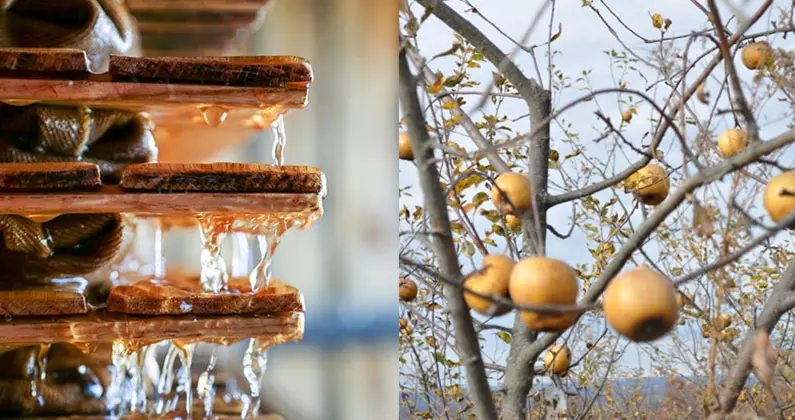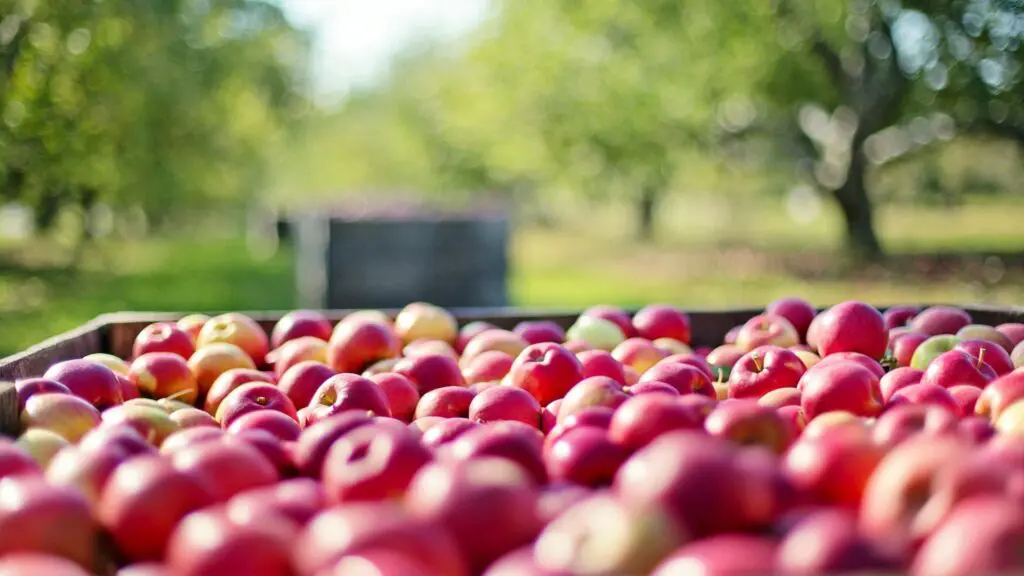Adding apple to your cooking repertoire is a great way to breathe new life into the most simple recipes. Whether that is the fruit itself, raw sweet apple juice, cider or apple cider vinegar, the apple must profile carries a lot of weight when it comes to flavor. Fortunately, Jonathan Carr, co-owner of Carr’s Ciderhouse in Hadley, Massachusetts, and co-author of the upcoming “The Ciderhouse Cookbook,” was happy to help with lessons in how to best use juice, cider and cider vinegar in the kitchen.
Tip No. 1: Patience in Simmering Juice
“One of our favorite things is to cook down cider and make what’s essentially a reduction,” Carr says. “That’s known as ‘cider syrup’ or ‘boiled cider’ and that’s been made since colonial times.”
When cooking down sweet apple juice or hard cider, Carr says not to be afraid of a little extra time for a slow simmer over low heat. “You end up with a syrup that’s kind of like maple syrup, it’s just a little darker but it’s much fruitier,” he says.
A simple reduction is versatile in the kitchen, you can brush it on a roast minutes before removing it for a caramelized finish, or even use the sweet sauce for a unique take on baked goods. “It gives this beautiful color and adds a little hint of sweetness and tanginess,” Carr adds.
Tip No. 2: Cider to Brighten up
A splash of cider in the pot, maybe a splash (or two) in the glass for you! If you’re feeling generous with the cider you’re drinking, Carr recommends putting it to good use in the kitchen by adding it to soups to brighten up the flavor — same goes for apple cider vinegar, just to a heightened degree.
“The acidity and the appley-ness really create another layer of depth in the recipe,” he says. “All the flavors come alive.” Carr says a quarter cup of cider or apple cider vinegar is enough to do the trick in a soup. The cider cooks down and leaves just an extra hint of tanginess, a great trick for vegetable soups and stews alike.
Tip No. 3: Stick with Tried and True Apple Cider Vinegar
“Everybody thinks of salad dressings when they think of vinegar and that’s of course a great way to use cider vinegar,” he says. The acidic flavors in salad dressing make it much more enjoyable to eat those leafy greens. Carr suggests a Spanish ajada, garlicy and spicy sauce made with a healthy dose of cider vinegar, poured over warm potatoes and greens. “More people need to be making this, it’s just so good,” he says.









